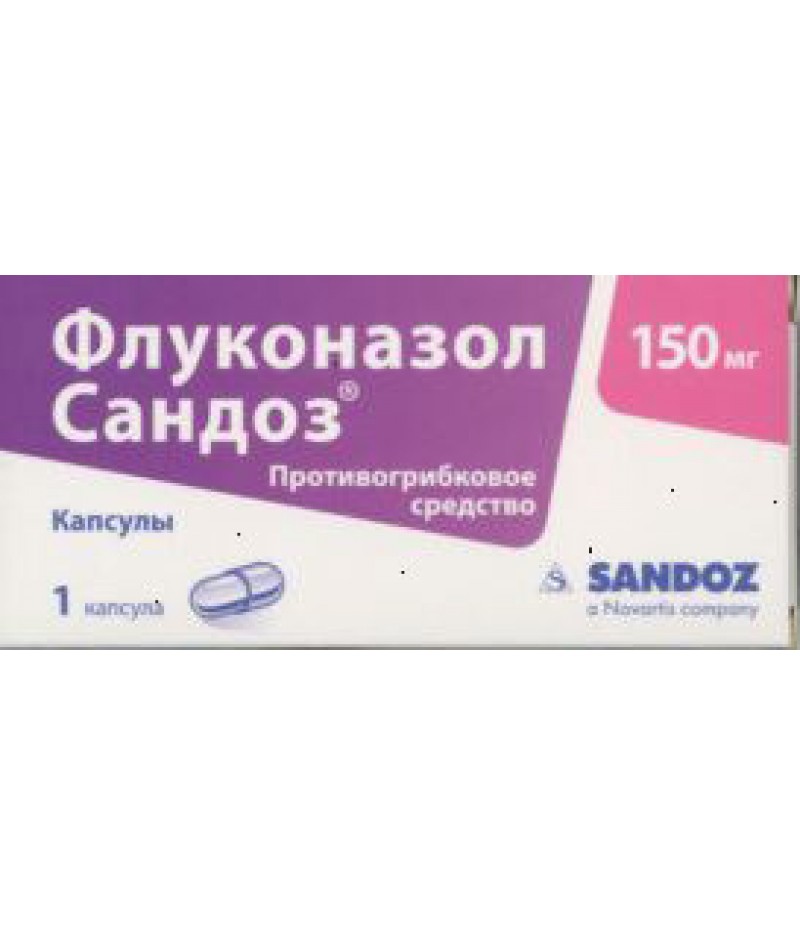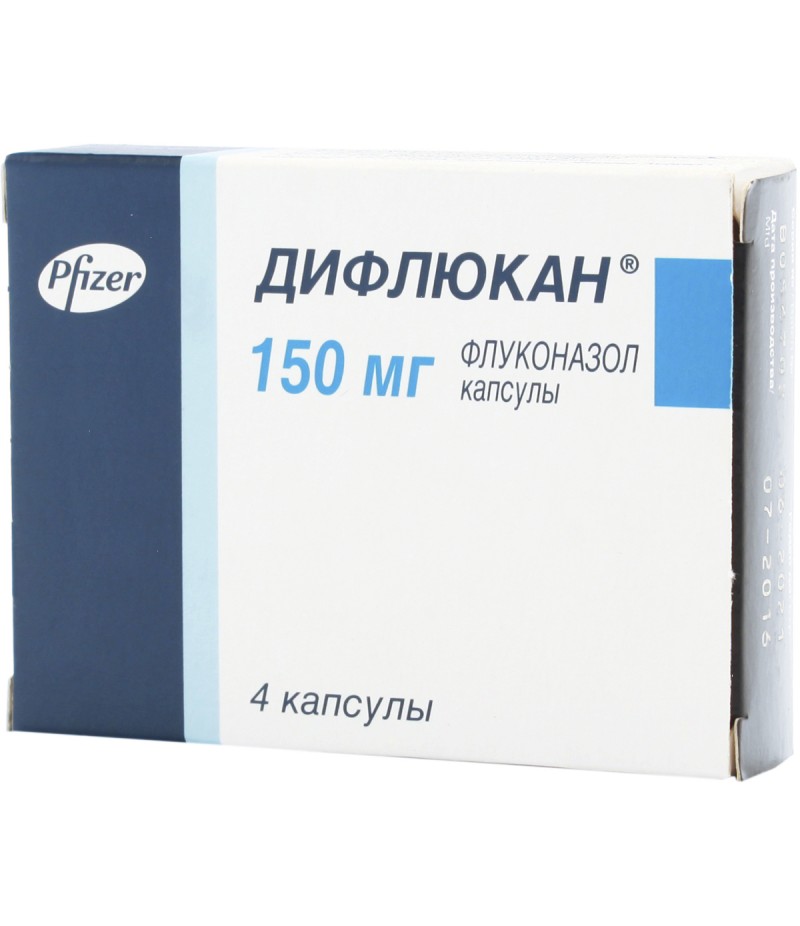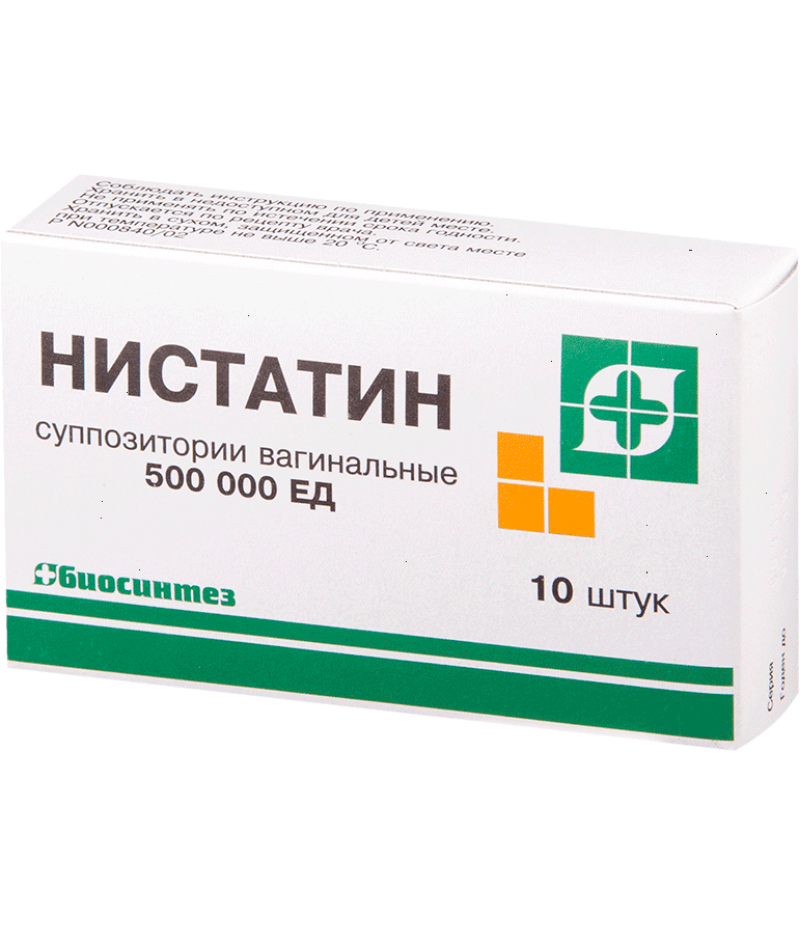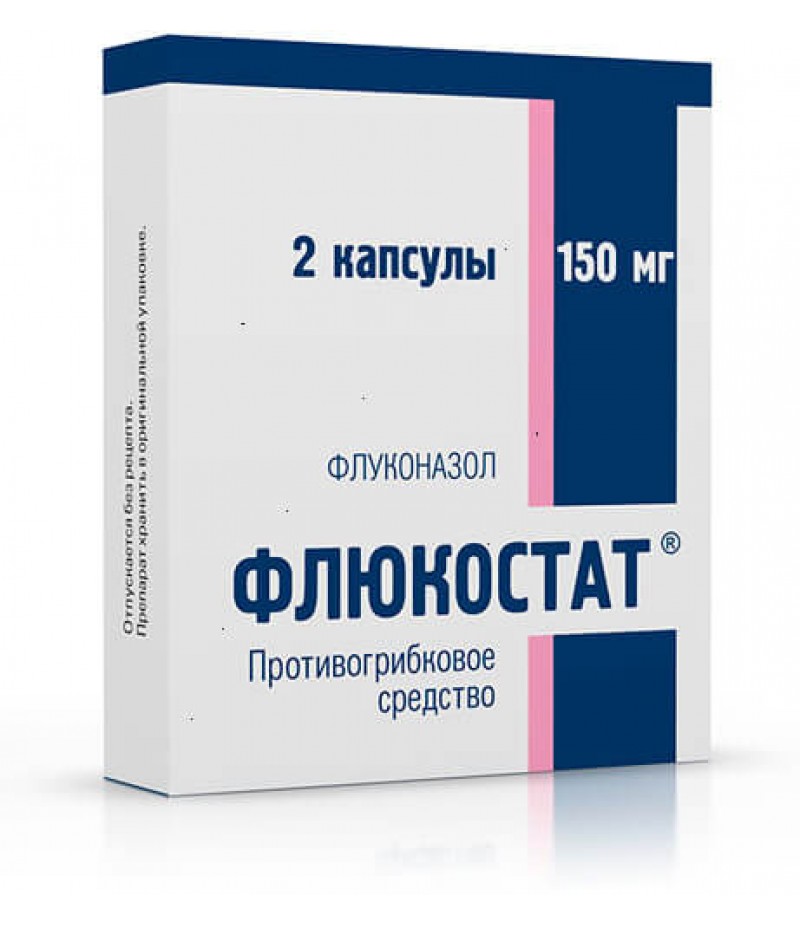Fluconazole caps 150mg #1
- $10.45
- 3 or more $9.99
- Availability:In Stock
Fluconazole instruction for useTo buy Fluconazole just add it to your shopping cartComposition of FluconazoleThe composition of the drug in the form of capsules includes the active component fluconazole. Capsules also contain addi..
Tags: caps
Fluconazole instruction for use
To buy Fluconazole just add it to your shopping cart
Composition of Fluconazole
The composition of the drug in the form of capsules includes the active component fluconazole. Capsules also contain additional components: potato starch, low molecular weight polyvinylpyrrolidone, calcium stearate or magnesium stearate.
Fluconazole in tablets contains a similar active ingredient, as well as sodium lauryl sulfate as an additional component.
Form of issue
This medicine is available in capsules of Fluconazole 150 mg, 50 mg, 100 mg. This capsule is blue, inside is a white or yellowish granular powder. Contained in contour squares, which are put in boxes of cardboard. Fluconazole tablets, syrup, gel, suppositories, solution for the administration of Fluconazole IV are also produced.
pharmachologic effect
The abstract contains information that the drug acts as an antifungal agent, inhibiting the specific synthesis of fungal sterols. Refers to the class of triazole compounds.
There is a specific effect on the enzymes of fungi, which depend on cytochrome P450. The active substance exhibits activity against a variety of strains of Candida spp. (including effective in visceral candidiasis), Cryptococcus neoformans (including effective for intracranial infections), Trichophytum spp, Microsporum spp. Also, the drug is active against microorganisms that are the causative agents of endemic mycoses: Coccidioides immitis, Hystoplasma capsulatum, Blastomyces dermatitidis.
The agent stops the conversion of fungal cells to ergosterol lanosterol. Under its influence, the permeability of the cell membrane increases, the process of its growth and replication is inhibited. Highly selective for cytochrome P450 fungi, but in the human body, these enzymes almost do not depress. Anti-androgenic activity is not demonstrated.
Pharmacokinetics and pharmacodynamics
Wikipedia testifies that after oral administration the drug is actively absorbed into the human gastrointestinal tract. In plasma, the concentration level of the active substance is greater than 90% of the level, which is indicated if an intravenous route of administration is practiced. The absorption of the substance is not affected by food intake, so it does not matter how to take, before meals or after. After taking the medicine inside, the highest concentration in the blood takes place after 0.5-1.5 hours. The half-life of blood is 30 hours. That is, you can take the medication once a day. With vaginal candidiasis, a single dose is sufficient, for which one tablet or another form of the drug is used.
11-12% of the active substance binds to blood plasma proteins. When the drug starts to work, it depends on the treatment regimen. If you take the medication every day, the stable concentration of the active ingredient in the blood of a person is observed on the fourth or fifth day (in 90% of people). In the event that on the first day of treatment the patient is given a twice daily dose, this effect is already observed on the second day of treatment.
Penetrates the body in all fluids. It is excreted from the body through the kidneys, approximately 80% is excreted unchanged.
Indications for use
The following indications for the use of the drug are determined:
infectious diseases provoked by candidias (disseminated candidiasis, generalized candidiasis, other forms of invasive candidiasis;
Candidiasis of mucous membranes (including pharynx, oral cavity, esophagus);
Candiduria;
chronic atrophic and skin-mucous candidiasis of the oral cavity (develops in people with dentures);
non-invasive bronchopulmonary infections;
Candidiasis genital (vaginal candidiasis in acute form and with relapses);
prevention of the re-emergence of vaginal candidiasis (in the event that the disease develops three times a year), candidiasis balanitis;
cryptococcal infection, cryptococcal meningitis;
onychomycosis;
dermatomycosis (including mycosis of the body, feet, groin area);
pityriasis lichen;
endemic mycoses are deep;
prevention of the development of fungal infections in people who have been cytostatic or radiation therapy.
Contraindications
There are such contraindications for the use of this medication:
the manifestation of high sensitivity to fluconazole or to azole compounds, which are close in chemical structure to fluconazole;
concurrent use of terfenadine if a patient receives a dose of Fluconazole 400 mg per day or more;
concurrent administration of astemizole with any other drugs that increase the QT interval;
age up to 4 years.
Caution should be taken with liver failure, as well as kidney failure, with the appearance of a rash in people suffering from superficial fungal infection, with potentially pro-rhythmogenic conditions in people who have risk factors (organic heart disease, medication that causes arrhythmia, electrolyte imbalance). How to take Fluconazole in this case, you should always ask a specialist.
Side effects
When treating the drug in a patient, these side effects may develop:
abdominal pain, diarrhea;
headache;
nausea, flatulence;
rash on the skin;
hepatotoxic effects;
anaphylactic reactions.
How to drink a medicine with such effects, and whether to continue treatment, you should individually consult a doctor.
Instructions for use Fluconazole (Method and dosage)
The drug is administered orally (Fluconazole Stada capsules, Fluconazole Teva, tablets) or for intravenous administration. Also there are other forms of the drug, the active substance of which is fluconazole, - candles, ointment.
The solution is infusively administered at a rate not exceeding 10 ml per minute.
Fluconazole tablets, instructions for use
The dosage of the drug depends on the disease and its severity.
Patients with disseminated candidiasis, candidemia in the first day prescribe 400 mg, then the dose should be reduced to 200 mg. Children with the purpose of treatment of generalized candidiasis show a daily intake of 6-12 mg per 1 kg of body weight.
Patients with oropharyngeal candidiasis are shown from 50 mg to 100 mg of Fluconazole once a day, the treatment period is 1-2 weeks.
People suffering from atrophic candidiasis of the oral mucosa are shown at 50 mg once a day. Treatment is combined with the use of local denture treatments. When treating other candidiasis infections mucous appoint 50-100 mg per day, the period of therapy - from 14 to 30 days.
To prevent the development of recurrences of oropharyngeal candidiasis, people with AIDS are shown 150 mg once a week. If mucosal candidiasis develops in children, the dose should be taken at the rate of 3 mg LS per kg of body weight per day. On the first day, you can give the child a double dose.
Patients with cryptococcal infections and cryptococcal meningitis, as a rule, are prescribed 200-400 mg of LS once a day. The first day shows the intake of 400 mg of the drug. Duration of treatment can be from 6 to 8 weeks. Children are prescribed a dose of 6-12 mg per kg of body weight per day.
People suffering from infectious skin diseases are recommended to administer 150 mg once a week or to drink 50 mg once a day. Treatment should be continued for 2-4 weeks. For men and women with mycosis of feet, sometimes longer therapy is required - up to 6 weeks.
Patients with pityriasis are recommended to take 300 mg once a week, the period of therapy - 2 weeks. Depending on the intensity of the symptoms, the doctor may prescribe another method of Fluconazole in the third week. It is possible to use another treatment regimen - 50 mg once a day, the period of therapy - two to four weeks.
Onychomycosis patients are prescribed 150 mg once a week. Therapy should continue until the healthy nail grows on the site of the sick nail.
People with deep endemic mycosis sometimes undergo a long course of treatment with a drug that can last up to two years. The dose per day is 200-400 mg.
Instructions for the use of fluconazole for thrush provides that with vaginal candidiasis, a single dose is taken, its dose is 150 mg.
As a rule, fluconazole with thrush is effective after a single dose. But more about how to take Fluconazole with thrush, the doctor will tell after an individual consultation. Before you determine how to drink any medicine for thrush with thrush, the expert takes into account the causes of the disease and the individual characteristics of its course. With chronic thrush, Fluconazole Teva or other varieties of the drug are prescribed to prevent recurrence at a dose of 150 mg once a month. Use the drug you need for 4-12 months. For the purpose of prevention, the capsules are given in a dose of 50-400 mg once a day, depending on how high the risk of manifestation of the disease. Children from the thrush Fluconazole in tablets is given in a dose of 3-12 mg of medicine per 1 kg of weight per day. How much to drink, depends on the severity of the infection.
When balanitis treatment scheme for men is as follows: the drug should take a dose of 150 mg once.
Some patients are wondering whether it is possible to drink with monthly tablets or capsules. According to the expert, you can take Fluconazole at any time, regardless of the monthly cycle. Through how much the medicine helps, depends on the intensity of the symptoms of the disease.
Overdose
In case of an overdose, the patient may experience nausea, diarrhea, vomiting, severe overdose may cause seizures. There are data on single manifestations of hallucinations. In case of an overdose, forced diuresis is applied, gastric lavage, hemodialysis is performed. Symptomatic treatment is also used.
Interaction
Before starting treatment it is important to know not only about why Fluconazole in tablets and in other forms helps, but also about the interaction of drugs with other drugs.
With the simultaneous administration of warfarin, the prothrombin time of fluconazole becomes longer.
With the simultaneous administration of hypoglycemizing oral agents belonging to the group of sulfonylurea derivatives, the half-life of Fluconazole increases. As a consequence, there is a possibility of hypoglycemia.
With the simultaneous administration of phenytoin, there is a clinically significant increase in the concentration of phenytoin.
With simultaneous repeated use of hydrochlorothiazide, there is an increase in the concentration of fluconazole in the blood. Do not change the dosage.
With simultaneous treatment with Rifampicin, the AUC decreases by 25%. Also reduces half-life by 20%. In some cases, the doctor decides to increase his dose.
In the treatment of Fluconazole, a control of the concentration of cyclosporine in the blood is recommended.
If at the same time the patient receives high doses of Teofillin, it is important to consider the likelihood of an overdose of Teofillin.
Contraindicated take a day at a dose of more than 400 mg in combination with Terfenadine.
With the simultaneous administration of Cisapride may have negative side effects from the vessels and the heart, in particular, paroxysms of ventricular tachycardia.
If you combine Fluconazole and Zidovudine, the patient should be monitored by the physician, as side effects of Zidovudine may increase.
If astimizole, Cisapride, Tacrolimus, Rifabutin or any other drugs that is metabolized by the cytochrome P450 system are prescribed simultaneously, an increase in the concentration of these blood products may be possible.
The absorption of fluconazole is not affected by the simultaneous administration of cimetidine or antacids.
Terms of sale
The prescription is not required to buy Fluconazole.
Storage conditions
Store candles Fluconazole, ointment Fluconazole, cream, tablets and capsules should be in a dark place, medicines should be protected from sun rays.
Shelf life - 3 years.
special instructions
If there are violations of the liver during treatment, continuous monitoring of the doctor is important. If there are signs of liver damage, you should cancel the medication.
Applying medicine locally for men and women, it should be noted that people with AIDS often develop a variety of skin reactions.
It is necessary to take into account not only how much Fluconazole acts, but also the fact that with the premature cessation of treatment it is possible the development of relapses. Therefore, it is important to completely complete the prescribed treatment regimen. It is important to take this into account when applying Fluconazole from the nail fungus, as the reviews with the nail fungus indicate that with the premature termination of treatment, a relapse of the disease is possible.
Many patients have a question about whether Fluconazole is an antibiotic or not? It should be borne in mind that this is an antifungal agent, not an antibiotic.
Whether it is possible for men to take this drug, depends on the diagnosis. Fluconazole for men is prescribed for fungal infections, it should be taken exactly as prescribed.
Which is better: Fluconazole or Diflucan?
Often patients compare two drugs with an antifungal action - Fluconazole and Diflucan. What is the difference between these drugs? Both preparations are based on the active substance fluconazole. Diflucan is available in the form of tablets of 50 mg, 100 mg, 150 mg, as well as in other forms. But the price of Diflucan is much higher.
Flukostat or Fluconazole - which is better?
Speaking about the difference between Flucostat and Fluconazole, it should be noted that both preparations contain the same active substance. Flucostat is a more expensive medicine. What is the difference between these drugs, and which of them should be optimally assigned in a particular case, is determined by a specialist. As a rule, Fluconazole is more often prescribed for prophylaxis for cancer patients after radiation and chemotherapy.
Fluconazole or Nystatin - which is better?
Nystatin is an antifungal drug, an antibiotic that is active against Candida bacteria. Under the influence of Nystatin, the permeability of the membrane of the fungal cells is disturbed, which contributes to the disruption of their growth and reproduction. Which drug is preferred in a particular case depends on the diagnosis and on the appointment of the doctor.
For children
The instructions state that the drug is prescribed to children after reaching 5 years of age. Dosage to children is determined depending on the disease. As a rule, it is determined from the calculation of 6-12 mg per 1 kg of the child's weight. Children under 5 years of age are prescribed medication strictly according to the indications and under the supervision of a specialist.
Fluconazole and alcohol
Discussing compatibility with alcohol, Fluconazole, doctors do not recommend drinking alcohol during treatment. This combination is very dangerous for the liver. In addition, alcohol during treatment can trigger the development of unpleasant side effects from the gastrointestinal tract, blood vessels, heart.
Fluconazole during pregnancy and lactation
Fluconazole during pregnancy is rarely prescribed, especially in the first trimester and in the 2nd trimester. Exceptions are only those cases when a woman is diagnosed with a severe fungal infection. When lactation drug is not prescribed, since the substance enters the breast milk.
Reviews of Fluconazole
In view of the high fungicidal activity of this drug, patient reviews and doctor reviews of Fluconazole are mostly positive. Patients, leaving feedback on Fluconazole Teva, as well as feedback on Fluconazole Stada on the forums, write that the drug helps to quickly and effectively eliminate the symptoms of fungal diseases. Users mention that tablets are relatively inexpensive, but at the same time they can completely get rid of nail fungus and other unpleasant diseases. In some cases, it is enough to take Fluconazole 150 mg once a day to completely overcome the symptoms of the disease.
Very often, women write positive responses about Fluconazole for thrush. It is noted that the medicine not only relieves thrush, but also helps prevent relapse of the disease.




